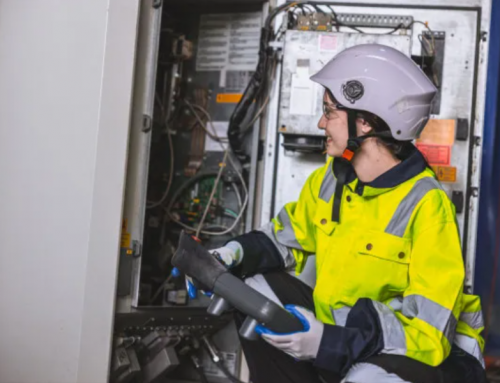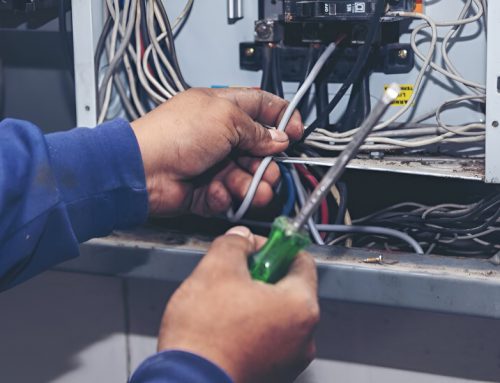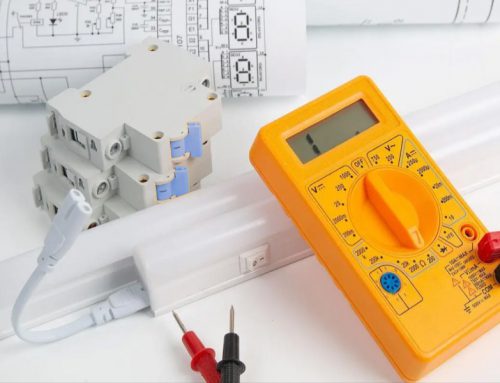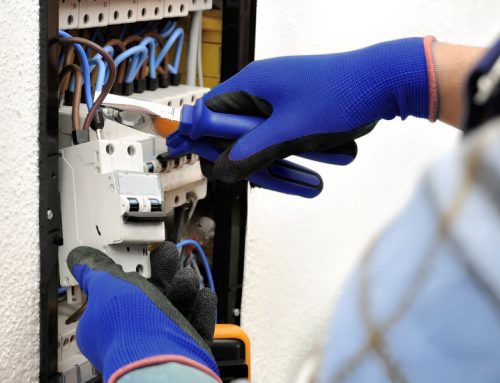What causes a breaker to trip?
1.Introduction.
This article will provide a detailed introduction to the definition and function of circuit breakers, explain the phenomenon of tripping, and explore the various reasons that cause circuit breakers to trip. At the same time, we will provide precautions for circuit breaker tripping and share some methods to reduce frequent circuit breaker tripping. In order to better explain the cause of circuit breaker tripping, we will analyze it based on actual cases.
2.Circuit breaker.
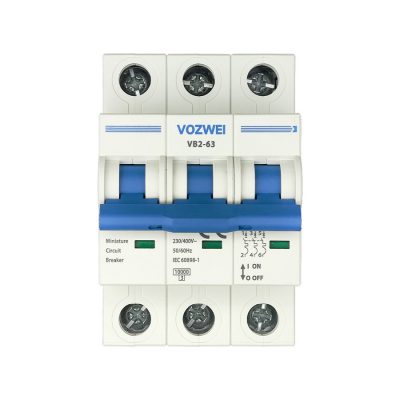
A circuit breaker is an electrical device used to protect a circuit from faults such as overload, short circuit, and leakage. It functions as an automatic switch in the circuit, automatically cutting off the current when an abnormality occurs in the circuit to ensure safe operation of the circuit.
The circuit breaker is composed of control switches, protective devices, and dismantling devices. The control switch is used to manually operate the switch status of a circuit breaker, usually in three positions: on, off, and reset. The protective device is the core part of the circuit breaker, responsible for monitoring the circuit status and determining whether to cut off the current. Common protective devices include overload protection, short circuit protection, and leakage protection. The dismantling device is used to remove faults and then close the circuit breaker again.
The working principle of a circuit breaker is based on a thermal electromagnetic mechanism. When the current in the circuit exceeds or approaches the rated current of the circuit breaker, the overload protection device will sense the change in current and generate heat, causing the thermal element to expand, and ultimately touching the heat release device will cut off the current of the circuit breaker. Short circuit protection devices use the instantaneous increase in current to sense and quickly cut off the circuit. The leakage protection device detects the leakage situation in the circuit, and once it detects the presence of leakage, it quickly cuts off the current to avoid the danger caused by leakage.
The function of circuit breakers mainly has three aspects. Firstly, it can protect circuits and electrical equipment from overload hazards. When the current in the circuit exceeds the rated current of the circuit breaker, it can cause problems such as overheating of wires, damage to electrical equipment, and even fire. The circuit breaker can cut off the current in a timely manner to prevent these problems from occurring. Secondly, it can prevent the danger caused by circuit short circuits. A short circuit in a circuit refers to the abnormally high current generated by bypassing the normal path in the circuit, which can cause the wires to overheat instantly and even cause a fire. Finally, circuit breakers can also detect and prevent leakage in the circuit. Leakage refers to the abnormal leakage of current in a circuit to ground or other areas that should not flow, which may lead to electric shock accidents.
In short, circuit breakers play a crucial protective role in circuits, allowing real-time monitoring and cutting of current to ensure circuit and personal safety. Widely used in the home and industrial fields, it provides effective safety guarantees for the stable operation of electrical systems.
3.Tripping operation.
Tripping refers to a situation where a circuit breaker automatically cuts off the current in a circuit. When faults such as overload, short circuit, and leakage occur in the circuit, the circuit breaker will automatically detect abnormalities and quickly cut off the current based on the setting conditions and working principles of the internal protection device to protect the safe operation of the circuit and equipment.
4.Reason for circuit breaker tripping.
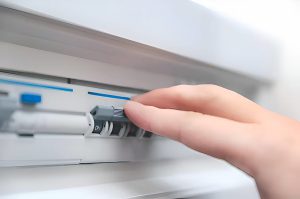
Circuit breaker tripping refers to the situation where the circuit breaker automatically cuts off the current in the circuit. The main reasons for circuit breaker tripping include overload protection, short circuit protection, and leakage protection.
Firstly, overload protection is one of the common causes of circuit breaker tripping. Overload refers to the current in a circuit exceeding the rated current of the circuit breaker. When the circuit load is too high or electrical equipment is used too much at the same time, the current will increase and exceed the carrying capacity of the circuit breaker, causing the circuit breaker to trip to prevent dangers such as overheating of wires, damage to electrical equipment, or fire. For example, in a home, if too many high-power appliances, such as electric kettles, ovens, and microwaves, are connected to the same socket, the circuit load will exceed the carrying capacity, causing the circuit breaker to trip.
Secondly, short-circuit protection is also a common cause of circuit breaker tripping. Short circuit refers to the situation where the normal path in a circuit is bypassed and abnormally high current is generated. When direct and abnormal electrical contact occurs between two electrodes, the current in the circuit will rapidly increase, exceeding the rated current of the circuit breaker, causing the circuit breaker to automatically cut off the current. For example, when the insulation of the wire is damaged or there is a short circuit inside the electrical equipment, there will be abnormally large current flow in the circuit, causing the circuit breaker to trip.
Finally, leakage protection may also cause the circuit breaker to trip. Leakage refers to the abnormal leakage of current in a circuit to ground or other areas that should not flow. The leakage protection device can detect current leakage and quickly cut off the power supply to avoid electric shock accidents. When there is leakage in the circuit, the leakage protection device will sense the current leakage and cut off the circuit to protect personal safety. For example, when electrical equipment in a home experiences leakage, the leakage protection device will detect the leakage signal and cut off the power supply to prevent accidents caused by leakage.
5. Precautions after circuit breaker tripping.
When the circuit breaker trips, it is necessary to pay attention to the following aspects to ensure safe and correct fault handling:
(1).Cut off the power supply: Firstly, cutting off the power supply is the most basic and important step. Before dealing with tripping issues, it is necessary to cut off the power switch or main circuit breaker to ensure that the circuit is in a power off state, avoiding the risk of electric shock and further faults.
(2).Cause investigation: Finding and determining the specific cause of circuit breaker tripping is the key to solving the problem. It is possible to check whether there are overload, short circuit, leakage and other issues in the circuit, and check whether the relevant equipment is working properly. You can inspect the wiring, power sockets, switches, and other parts of the protected equipment one by one, or hire a professional electrical engineer for maintenance and repair.
(3).Fault recovery: If the specific cause of the circuit breaker tripping is found, it is necessary to repair or replace the faulty component in a timely manner to restore the normal operation of the circuit. Depending on the actual situation, it may be necessary to replace damaged wires, plugs, switches, electrical equipment, etc.
(4).Load balancing: If the trip is caused by overload, it is necessary to plan the circuit load reasonably and perform load balancing. Confirm the rated power and current of each device, allocate the power load reasonably, and avoid using too many devices concentrated on the same circuit. We can consider increasing power lines and adding power sockets to distribute the load.
(5).Safety check: Before fixing the problem and preparing to power it on again, a safety check is required. Ensure that all wire joints are securely and reliably fastened, with good insulation and no risk of leakage. At the same time, check if the relevant equipment is functioning properly, such as lighting fixtures, electrical equipment, etc.
(6).Recovery one by one: After confirming that all issues have been resolved, electrical equipment can be reconnected one by one and circuit breakers can be opened one by one. By restoring the circuits one by one, it is possible to detect whether the current and power of each device are normal, avoiding problems such as overloading or short circuits again.
(7).Attention observation: After the circuit is re energized, the operation of the equipment and circuit should be carefully observed to ensure that no further tripping or other abnormal situations occur. If the problem persists or the malfunction cannot be resolved, it is recommended to seek professional electrical engineers for further maintenance and repair.
In short, after the circuit breaker trips, it is necessary to cut off the power supply, identify the cause of the fault, promptly repair the fault, and conduct safety checks and restore work. To ensure personal safety and the normal operation of electrical equipment, it is recommended to follow relevant safety operating procedures and consult professional electrical engineers for assistance when necessary.
6.Case Study.
Below, I will combine two practical cases to analyze the possible causes of circuit breaker tripping.
Case 1: A circuit trip in a home
Situation description: In a residential household, the circuit breaker often trips, affecting normal electricity consumption.
Analysis:
Overload protection: This is one of the common causes of circuit breaker tripping. Excessive household electrical load and the simultaneous use of high-power electrical equipment can cause the current to exceed the rated current of the circuit breaker, leading to circuit breaker tripping. For example, when high-power appliances such as induction cookers, microwaves, and hot water kettles are used simultaneously in the kitchen, the load on the circuit may increase, which may exceed the carrying capacity of the circuit breaker and cause it to trip.
Short circuit protection: If there is a short circuit problem in the home circuit, such as damaged wire insulation or internal faults in electrical equipment, it may cause abnormally large current flow, exceeding the rated current of the circuit breaker, causing the circuit breaker to automatically cut off the current. For example, when the plug or socket has poor contact or the wire is aged or damaged, resulting in a short circuit, it can cause the circuit breaker to trip for protection.
Solution:
Check circuit load: Evaluate the circuit load of the household, avoid using too many high-power electrical equipment at the same time, and distribute the load of each socket reasonably to reduce the risk of circuit overload.
Check wires, plugs, and sockets: Regularly check the wires, plugs, and sockets in the home to ensure they are intact and avoid short circuit problems.
Case 2: A circuit breaker in the office trips.
Situation description: A circuit breaker in a certain area of an office frequently trips, resulting in the inability of electrical equipment in that area to function properly.
Analysis:
Overload protection: Electrical equipment in the office area may exceed the carrying capacity of the circuit, causing the current to exceed the rated current of the circuit breaker, thereby causing the circuit breaker to trip. For example, in a certain office area, multiple high-power devices such as air conditioners, copiers, and printers are used at the same time, resulting in excessive circuit load that exceeds the rated current of the circuit breaker and triggering circuit breaker tripping protection.
Faulty electrical equipment: Electrical equipment that may have malfunctions in the office area, such as damaged sockets, short circuited wires, etc. These malfunctions may cause circuit breakers to trip to protect circuits and personal safety.
Solution:
Distributed electrical equipment: Reasonably arrange electrical equipment in the office area to avoid excessive use of high-power equipment at the same time, and distribute circuit loads to reduce overload situations.
Repair or replace faulty electrical appliances: Regularly check the sockets and wires in the office area to ensure their normal operation. If any faulty electrical equipment is found, repair or replace it in a timely manner to prevent circuit breaker tripping issues.
In summary, overload protection and short circuit protection are common causes of circuit breaker tripping. In order to avoid frequent tripping of circuit breakers, it is necessary to pay attention to reasonable distribution of circuit load, regular inspection of wires and equipment, and ensure the normal operation of electrical equipment to improve the safety and reliability of the electrical system.
7.How to avoid frequent tripping of circuit breakers?
To avoid frequent tripping of circuit breakers, we can take the following measures:
1.Install a leakage protector: Installing a leakage protector in a household can detect and cut off leakage problems in the circuit in a timely manner, improving electrical safety.
2.Reduce the simultaneous use of high-power appliances: Avoid connecting too many high-power appliances in the same circuit, distribute loads reasonably, and reduce the occurrence of overload situations.
3.Replace the circuit breaker with a suitable rated current: Select a suitable rated current circuit breaker based on different circuit load conditions to ensure that the circuit breaker can operate normally and carry current.
In short, circuit breaker tripping is an automatic protection measure taken to protect the circuit and personal safety. By understanding the causes of circuit breaker tripping and taking corresponding measures to avoid frequent tripping, the safety and reliability of the electrical system can be improved. When using electrical equipment in daily life, we should also pay attention to circuit loads, prevent short circuits and leakage, and ensure electrical safety.
Conclusion
A circuit breaker is a protective device in an electrical system used to protect circuits and equipment from abnormal conditions such as overload and short circuits. When the rated current or short circuit occurs in the circuit, the circuit breaker will automatically cut off the current to prevent safety accidents and electrical equipment damage.
There are various reasons for circuit breaker tripping, including overload, short circuit, faulty electrical appliances, etc. In practical life, circuit overload and short circuit in households are common causes of circuit breaker tripping. In order to avoid frequent tripping of circuit breakers, it is necessary to pay attention to the reasonable distribution of circuit load, avoid using too many high-power electrical equipment at the same time, regularly check the integrity of wires and plugs, and promptly repair faulty equipment.
After the circuit breaker trips, the cause of the trip should be determined first and the abnormal situation should be ruled out before re closing. At the same time, it is also necessary to pay attention to the safe use of electrical equipment to avoid the recurrence of overload and short circuit situations.
In summary, understanding the function and working principle of circuit breakers, recognizing the various reasons that cause circuit breaker tripping, and taking corresponding preventive measures can ensure the safe operation of the electrical system and ensure the safety of personnel and equipment.
References
Appendix
Circuit: The complete closed path through which a current can pass.
